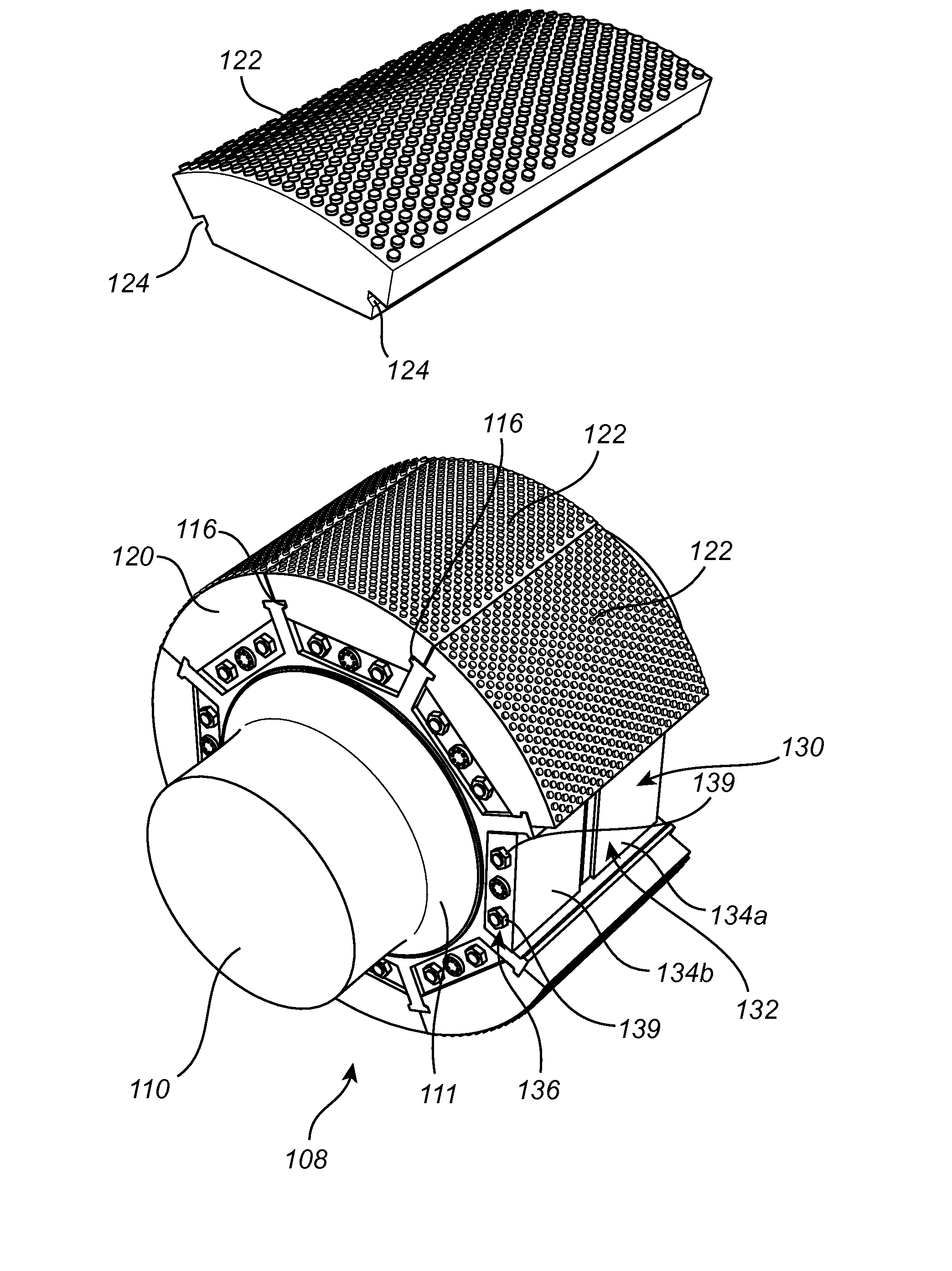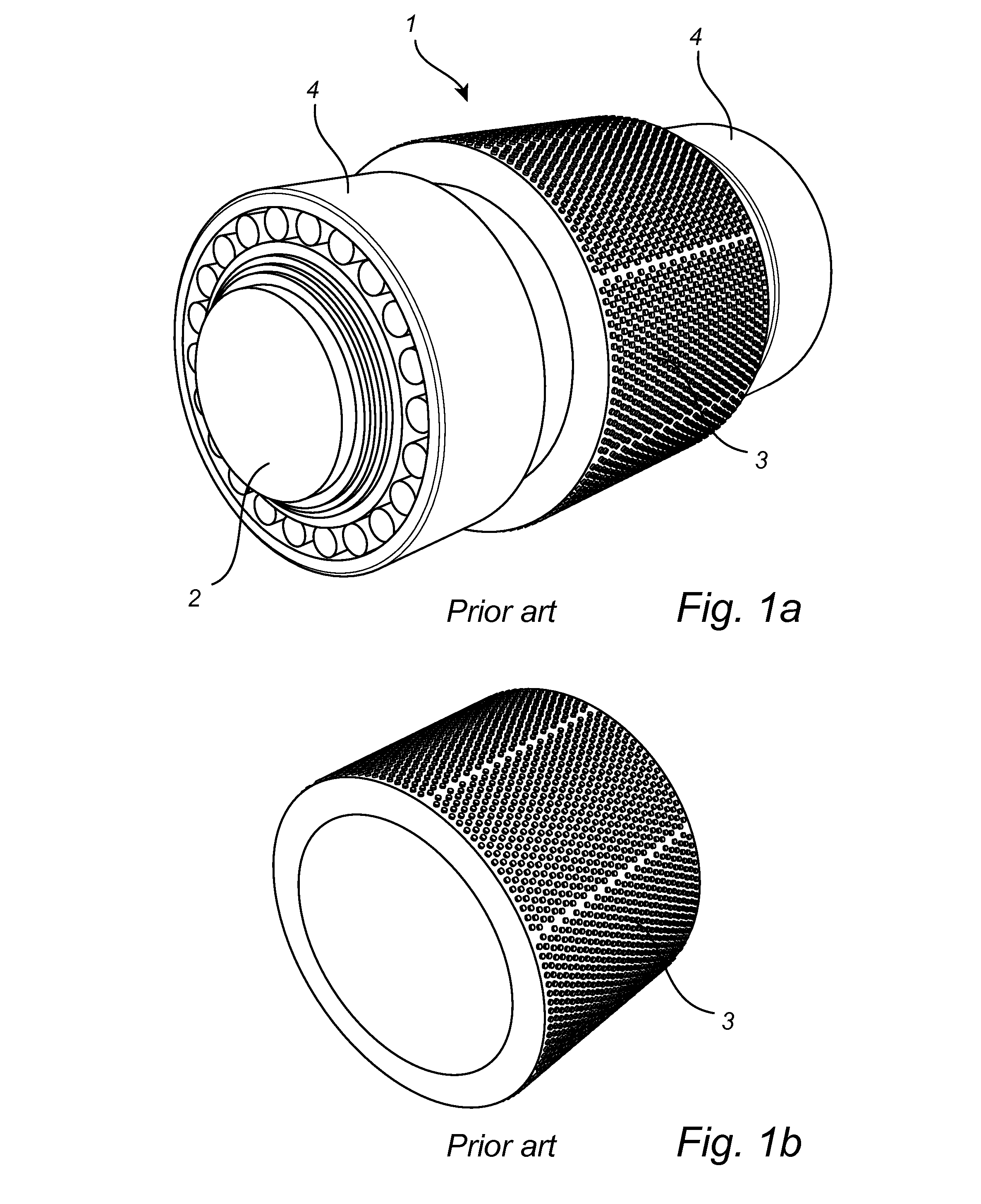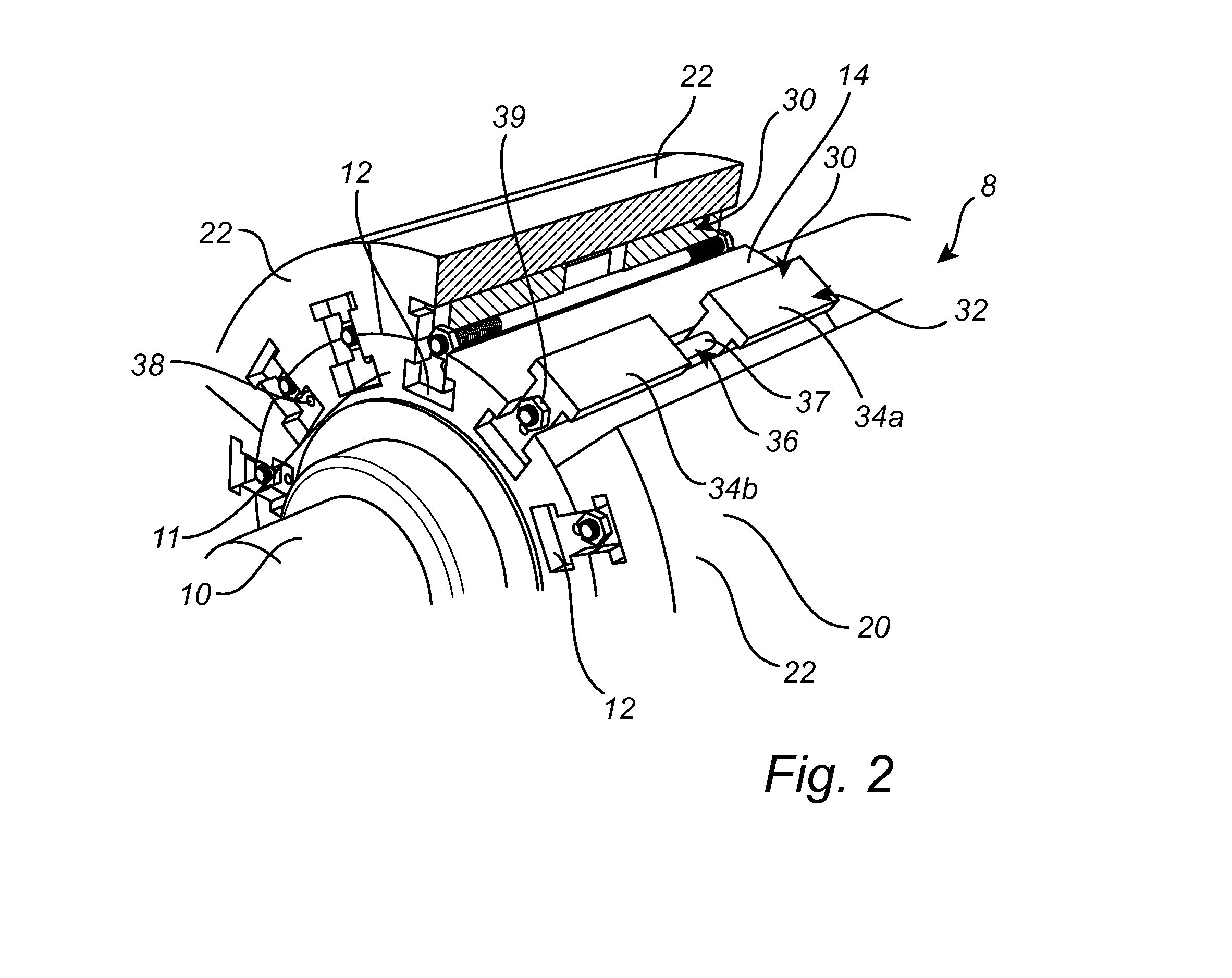Roll for a roller grinder, and roller grinder comprising such roll
a technology of roller grinder and roller, which is applied in the direction of manufacturing tools, grain treatment, cocoa, etc., can solve the problems of high pressure roller grinder for grinding, interruption of equipment operation, and high level of wear of processed materials, so as to achieve easy mounting and dismounting, and reduce costs
- Summary
- Abstract
- Description
- Claims
- Application Information
AI Technical Summary
Benefits of technology
Problems solved by technology
Method used
Image
Examples
Embodiment Construction
[0033]FIG. 1a shows one of the rolls 1 in a high pressure roller grinder (not fully shown) according to prior art. The roll 1 comprises a shaft 2 and a grinding shell 3 in the form of a generally tubular sleeve. The grinding shell 3 surrounds a hub of the shaft 2. The shaft 2 is held in the roller grinder by two bearings 4. For high pressure roller grinders it is not unusual for the roll to weigh in the order of 100 tons, wherein the grinding shell itself weighs in the order of 10 tons.
[0034]FIG. 1b shows the grinding shell 3 as shown in FIG. 1a when not being mounted on the shaft.
[0035]With reference to FIG. 2-7 a preferred embodiment of a roller grinder (not fully shown) according to the present invention will be described.
[0036]FIG. 2 shows a part of a roll 8 in a preferred embodiment of a roller grinder (not fully shown) according to the present invention. The roll 8 comprises a shaft 10, the shaft 10 being held in the roller grinder by two bearings (not shown). Moreover, the ro...
PUM
 Login to View More
Login to View More Abstract
Description
Claims
Application Information
 Login to View More
Login to View More - R&D
- Intellectual Property
- Life Sciences
- Materials
- Tech Scout
- Unparalleled Data Quality
- Higher Quality Content
- 60% Fewer Hallucinations
Browse by: Latest US Patents, China's latest patents, Technical Efficacy Thesaurus, Application Domain, Technology Topic, Popular Technical Reports.
© 2025 PatSnap. All rights reserved.Legal|Privacy policy|Modern Slavery Act Transparency Statement|Sitemap|About US| Contact US: help@patsnap.com



